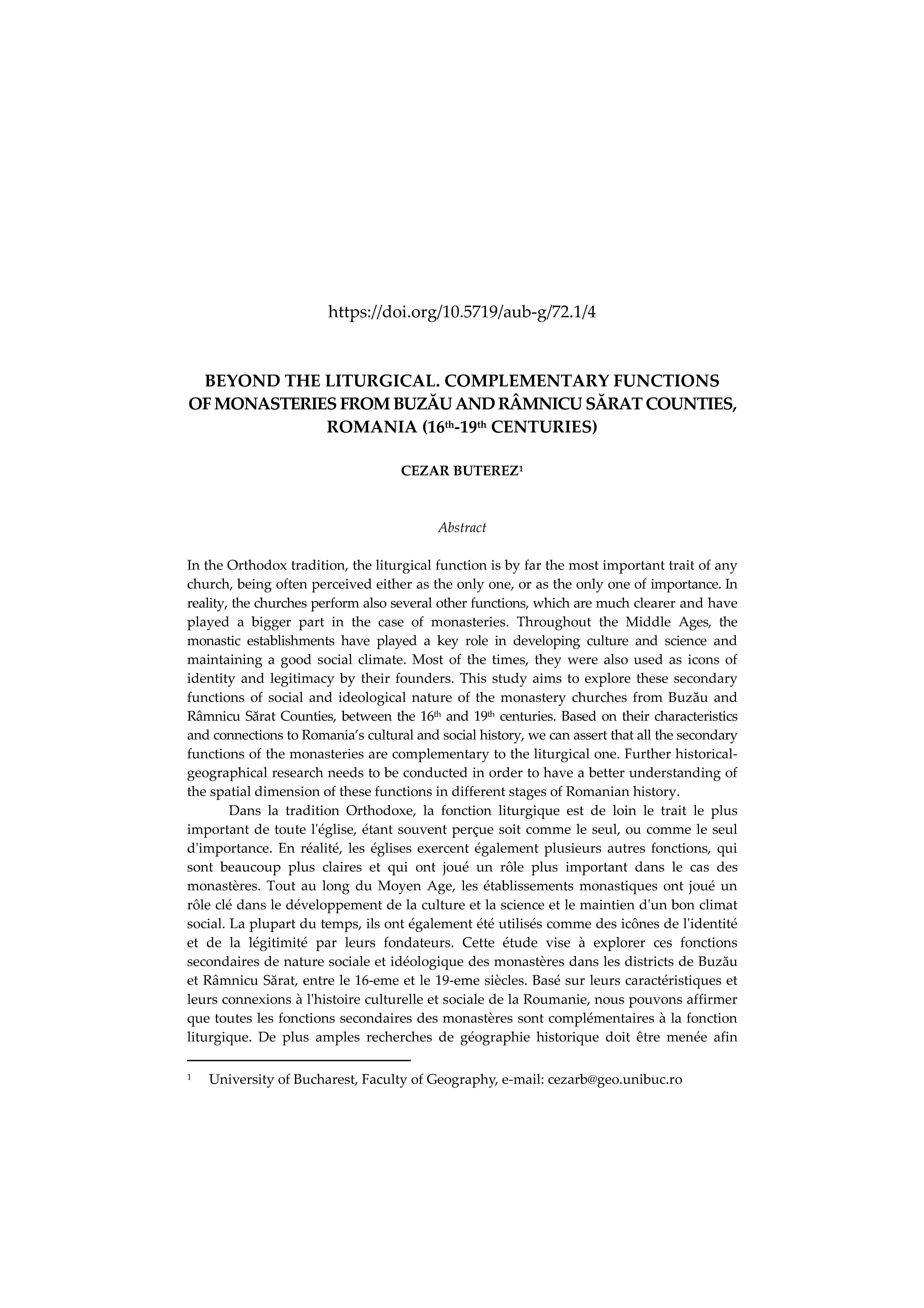BEYOND THE LITURGICAL. COMPLEMENTARY FUNCTIONS OF MONASTERIES FROM BUZĂU AND RÂMNICU SĂRAT COUNTIES, ROMANIA (16th-19th CENTURIES)
DOI:
https://doi.org/10.5719/aub-g/72.1/4Keywords:
function, ideology, refuge, monasteries, Buzău, Râmnicu SăratAbstract
In the Orthodox tradition, the liturgical function is by far the most important trait of any church, being often perceived either as the only one, or as the only one of importance. In
reality, the churches perform also several other functions, which are much clearer and have played a bigger part in the case of monasteries. Throughout the Middle Ages, the
monastic establishments have played a key role in developing culture and science and maintaining a good social climate. Most of the times, they were also used as icons of identity and legitimacy by their founders. This study aims to explore these secondary functions of social and ideological nature of the monastery churches from Buzău and Râmnicu Sărat Counties, between the 16th and 19th centuries. Based on their characteristics and connections to Romania’s cultural and social history, we can assert that all the secondary functions of the monasteries are complementary to the liturgical one. Further historical geographical research needs to be conducted in order to have a better understanding of the spatial dimension of these functions in different stages of Romanian history.




